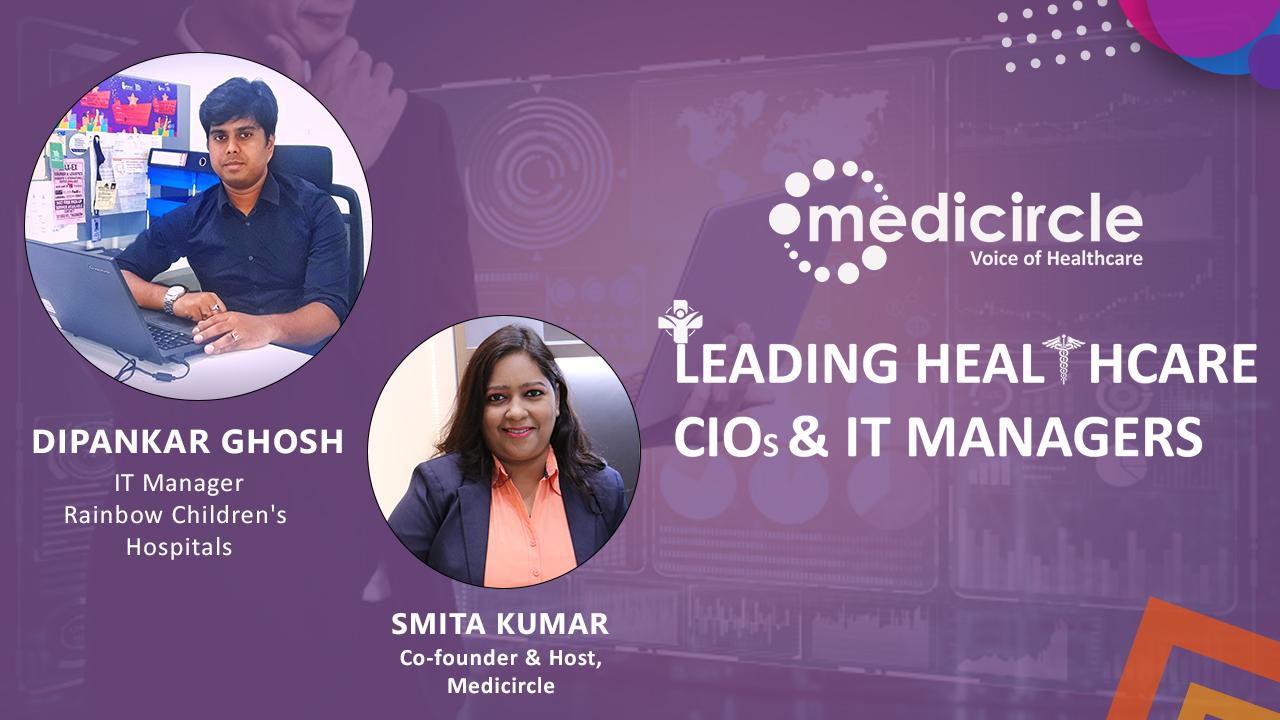The global healthcare IT space is brimming with new advancements as healthcare information technology has revolutionized patient care and healthcare services. IT enables secure sharing of patient information and helps healthcare providers to better manage patient care. During Covid times, the role of IT has been identified to be more valuable than ever before. Medicircle presents the healthcare IT manager series to bring forward the challenges and opportunities that they have experienced in the testing times.
Dipankar Ghosh is an IT Manager at Rainbow Children's Hospital, Delhi NCR. He is an experienced healthcare professional with over 12 years in the industry. He has worked with many healthcare organizations including Fortis Healthcare, Max Healthcare, Paras Healthcare, etc., and was also associated with well-known organizations like HCL and Tata in the initial phase of his career.
Rainbow Children’s Hospital is committed to the healthcare of children. The inpatient specialties for child care include neonatology, pediatric intensive care, neurology, gastroenterology, nephrology, hematology, oncology, pediatric surgery, cardiology, and nutrition. Equipped with state-of-the-art facilities, it renders the best service to women as the hospital also takes care of expecting mothers for childbearing and makes it a pleasurable journey. The hospital provides fertility treatment options of international standards with emphasis on personal care, support, transparency, and patient privacy.
IT professionals might play a supporting role but they lead the team to adapt to technology
Dipankar explains that though IT people are considered to support teams in industries like healthcare, they are the people who lead the big changes. Citing the example of the recent pandemic, he mentions that "during the crisis, it was the IT professionals who created, developed, and analysed new ways to reach people. He points out that when everything was under lockdown, there were only a few facilities that were available and healthcare is one of them. Along with the medical professionals, the IT team also got into the shoes of Corona warriors to provide advanced and major healthcare facilities remotely with ease. Making maximum use of digitization of healthcare would have not been possible without the IT professionals," says Dipankar.
Good coordination between IT and Medical professionals reaps good results
Dipankar emphasizes that “the dedication of doctors to adopt new technology helped in successful digitization of healthcare. IT department enabled the services but quick adoption of the same by the medical professionals also mattered. Only IT people single-handedly cannot bring about the change. I have immense respect for the doctors of my organization who have worked hand-in-glove with the IT professionals to make facilities like video consultation and EMR a success,” says Dipankar.
Initial contradictions are challenging but gradually things fall in place
Dipankar points out, “there is always a contradiction between medical and technical team whenever something new is getting implemented. Implementation of new technology poses a challenge for IT professionals when the end-users; the medical team displays inhibitions or disinterest towards it. But, later on, in most of the cases, things start getting into place after initial hiccups. So, the initial phase is always full of contradictory responses from the medical team and resultant challenges on the part of IT professionals. Another challenge is to ensure whether data has been captured properly or not by medical professionals as the journey from pen-and-paper to paperless era is not easy for them and to help them carry out their responsibilities without any technical glitch is no mean task,” says Dipankar.
The advantage of beginning from scratch and skill of persuasion helps to succeed
Dipankar mentions that since his beginning in the IT sector has been humble and it's not that he has become an IT Manager directly, it helps him to understand the small nuances of any problem. It helps him to analyse and find solutions by going to the root cause. Also, there have been instances in his career when some medical professionals were apprehensive to adopt new technology to enhance the quality of their services but due to his persuasive skills, he had been able to drive in his point. The appreciation from those professionals later on for making work easier and more effective for them is something that he cherishes dearly.
(Edited by Amrita Priya)

 “With advent of Covid19, there was more demand on IT professionals to enable the newest forms of technology in the healthcare segment and train the end-users to use that technology to the utmost level to meet the remote healthcare demands. IT professionals quickly took up the challenge,†says Dipankar Ghosh, IT Manager, Rainbow Children’s Hospital.
“With advent of Covid19, there was more demand on IT professionals to enable the newest forms of technology in the healthcare segment and train the end-users to use that technology to the utmost level to meet the remote healthcare demands. IT professionals quickly took up the challenge,†says Dipankar Ghosh, IT Manager, Rainbow Children’s Hospital.









.jpeg)











.jpg)








